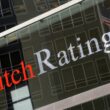It is just over a month since Mark Milner left the Daily Mail Group to become CEO of the listed UK information provider Wilmington Plc. Observers could be forgiven for wondering why, even before he started, the new CEO and the company itself were so keen to say he would be sticking with the strategy, in line with a consultant-supported “business review” completed before he arrived.
Chair Martin Morgan said the £170m company, which reported flat revenues for its first-half, having declined in the previous year, was in good strategic shape. The new CEO needed to bring new “emphasis on sales and marketing execution and on streamlining the organisation to enable it to move at a faster pace”. There were some subtle qualifications but Wilmington’s three similar-sized divisions – Financial Risk & Compliance, Professional, and Healthcare – were just fine. The board also signalled a decision to “de-prioritise” acquisitions.
Previous CEO Pedro Ros (ex Taylor Nelson Sofres) had re-focused the business across almost five years, building unified content, communications and management systems. He departed some months after the 2018 results showed that Healthcare had seen “no significant improvement in performance”, Professional had flat revenues, and only Risk & Compliance had grown satisfactorily. Brokers now estimate that, by 2020, total revenue will have been virtually flat for four consecutive years.
Wilmington was created in 1993 by UK publishing entrepreneur Brian Gilbert (ex Haymarket, United Trade Press, and Maxwell Communications Corp). It has almost continually bought and sold magazines, books, conferences, exhibitions, and databases. Like its founder, the company has been good at striking deals and cranking out profits. Ever since it was formed from business directories bought from the bankrupt estate of the late Robert Maxwell, Wilmington has been shaped by the deals it has done – and not done.
That’s why Milner, the company’s fifth CEO, may have enjoyed his first weeks of reading through the files and discovering just how close his predecessors had come to acquiring or merging with the gilded Metal Bulletin (snatched by Euromoney in 2006), the fast-growing business training group BPP (talks in 2008), and 10 years of flirting with Centaur Media. But, arguably, no deal would have been more transformative than Wilmington’s proposed 2016 acquisition of the Miami-based Association of Certified Anti-Money Laundering Specialists (ACAMS), described as “the largest international membership organisation dedicated to enhancing the knowledge and skills of anti-money laundering and financial crime prevention professionals”.
Warburg Pincus private equity hatched the deal to bring together its US company and Wilmington’s 14,000-member International Compliance Association (ICA) which would have become a global leader in the fast-growing market for information, training and technology on corporate ethics, financial crime prevention and compliance.
It is a hot sector. The UN estimates that some 2-5% of global GDP (or $1.6-$4 trillion) is laundered through corruption, drug trafficking, tax evasion and cybercrime. Compliance information companies like Wilmington and ACAMS provide the data, training, networking, and certification to enable financial institutions, insurers, asset managers, lawyers, law enforcement and credit institutions to combat the practice of generating income through illegal activity.
In the event, ACAMS was acquired for $330m by what is now the $1.3bn-revenue Adtalem Education Group; Wilmington is believed to have offered only two-thirds of the winning bid.
The abortive deal would have given Wilmington shareholders quite a lot to think about, if only they had known.
First, ACAMS’ $330m valuation (8 x revenue) indicated that Wilmington’s own compliance business (accounting for just 35% of total revenue) could conceivably be worth up to £300m – 75% more than the company’s total market cap.
Second, ACAMS has moved strongly to internationalise its business and increased its revenues by 50% in its first year under new ownership, compared with Wilmington’s compliance growth of less than 10% during the same period. The US company now has more than 65,000 members in 175 countries. It organises conferences and seminars in 23 countries, attended by 10,000 delegates. It may now be about twice the size of Wilmington’s Risk & Compliance division.
The whole episode underlines the challenge for B2B companies which, in pre-digital times, had often been mini-conglomerates publishing a wide range of single-sector magazines, exploiting the scale economies of print, paper and distribution. It’s a world that has been largely washed away by the the decline of print and the relentless internationalisation of digital markets.
The web rewards specialisation. Hence the inevitable trend towards two main types of increasingly-global B2B media company: 1) integrated single-sector specialists embracing information, consultancy and events 2) global multi-sector specialists operating in a single “channel” eg exhibitions or AI-driven newsletters. Whichever way you look at it, there is a premium on the expertise built by ‘narrow but deep’ integration in B2B media.
Somewhere in the middle are smallish companies still serving a handful of markets which they try to justify with neat strategic language, Venn diagrams and captivating web sites about “transforming knowledge into advantage”: random portfolios masquerading as strategic intent.
Such companies risk spreading themselves too thin to achieve real leadership in any sector at all, especially on a global scale. That is Wilmington whose international strategies are laid bare by its 60% revenue-dependance on the UK. But it is a quality company with many valuable information assets and a strong base of subscriptions revenue.
The weakness is in the detail. Wilmington’s professional division is a portfolio of services variously for accountants and lawyers and, after the collapse of some ambitious pan-European and US plans, the healthcare division has now decided to concentrate on France and the UK. But the company’s long-term success surely depends on its determination (or not) to invest wholeheartedly in its best growth sector. The growth of ACAMS highlights the race that is underway.
In the fragmented compliance market, Wilmington’s ICA and ACAMS would – more than ever – be a highly attractive global combination. Despite its success, the US company might just become a candidate for divestment from its education group parent. That’s the prize for the very-digital Mark Milner – once he shrugs off his pre-appointment pledge just to stick with the existing strategy.




